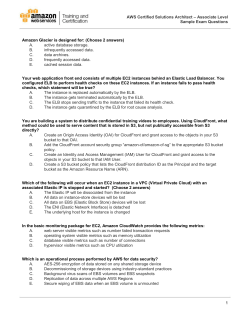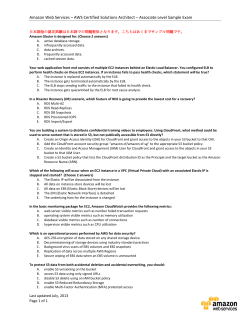
CprE 458/558: Real-Time Systems – WAN Real-Time Networks Traffic Shaping
CprE 458/558: Real-Time Systems Real-Time Networks – WAN Traffic Shaping CprE 458/558: Real-Time Systems (G. Manimaran) 1 Regulating flow control • The bursty traffic in the network results in congestion • Traffic shaping reduces congestion and thus helps the carrier live up to its guarantees • Traffic shaping is about regulating the average rate (and burstiness) of data transmission CprE 458/558: Real-Time Systems (G. Manimaran) 2 Traffic Shaping • Traffic shaping controls the rate at which packets are sent (not just how many) • At connection set-up time, the sender and carrier negotiate a traffic pattern (shape) • Two traffic shaping algorithms are: – Leaky Bucket – Token Bucket CprE 458/558: Real-Time Systems (G. Manimaran) 3 The Leaky Bucket Algorithm • The Leaky Bucket Algorithm used to control rate in a network. It is implemented as a single-server queue with constant service time. If the bucket (buffer) overflows then packets are discarded. CprE 458/558: Real-Time Systems (G. Manimaran) 4 The Leaky Bucket Algorithm (a) A leaky bucket with water. (b) a leaky bucket with packets. CprE 458/558: Real-Time Systems (G. Manimaran) 5 Leaky Bucket Algorithm (contd.) • The leaky bucket enforces a constant output rate regardless of the burstiness of the input. Does nothing when input is idle. • The host injects one packet per clock tick onto the network. This results in a uniform flow of packets, smoothing out bursts and reducing congestion. • When packets are the same size (as in ATM cells), the one packet per tick is okay. For variable length packets though, it is better to allow a fixed number of bytes per tick. CprE 458/558: Real-Time Systems (G. Manimaran) 6 Token Bucket Algorithm • In contrast to the LB, the Token Bucket (TB) algorithm, allows the output rate to vary, depending on the size of the burst. • In the TB algorithm, the bucket holds tokens. To transmit a packet, the host must capture and destroy one token. • Tokens are generated by a clock at the rate of one token every t sec. • Idle hosts can capture and save up tokens (up to the max. size of the bucket) in order to send larger bursts later. CprE 458/558: Real-Time Systems (G. Manimaran) 7 Token Bucket Algorithm (contd.) 5-34 (a) Before (b) After CprE 458/558: Real-Time Systems (G. Manimaran) 8 Token bucket operation • TB accumulates fixed size tokens in a token bucket • Transmits a packet (from data buffer, if any are there) or arriving packet if the sum of the token sizes in the bucket add up to packet size • More tokens are periodically added to the bucket (at rate t). If tokens are to be added when the bucket is full, they are discarded CprE 458/558: Real-Time Systems (G. Manimaran) 9 Token bucket properties • Does not bound the peak rate of small bursts, because bucket may contain enough token to cover a complete burst size • Performance depends only on the sum of the data buffer size and the token bucket size CprE 458/558: Real-Time Systems (G. Manimaran) 10 Token bucket - example • 2 tokens of size 100 bytes added each second to the token bucket of capacity 500 bytes – Avg. rate = 200 bytes/sec, burst size = 500 bytes – Packets bigger than 500 bytes will never be sent – Peak rate is unbounded – i.e., 500 bytes of burst can be transmitted arbitrarily fast CprE 458/558: Real-Time Systems (G. Manimaran) 11 Leaky Bucket vs Token Bucket • LB discards packets; TB does not. TB discards tokens. • With TB, a packet can only be transmitted if there are enough tokens to cover its length in bytes. • LB sends packets at an average rate. TB allows for large bursts to be sent faster by speeding up the output. • TB allows saving up tokens (permissions) to send large bursts. LB does not allow saving. CprE 458/558: Real-Time Systems (G. Manimaran) 12
© Copyright 2025












